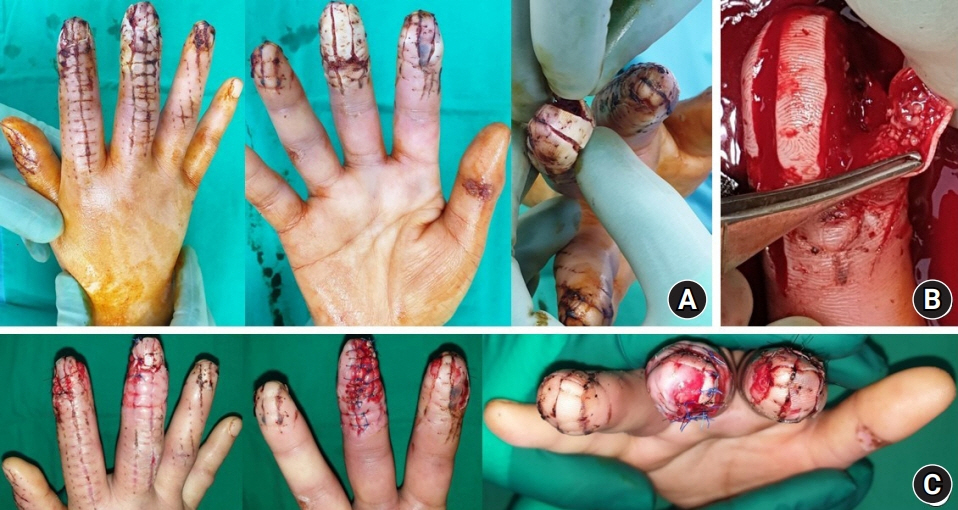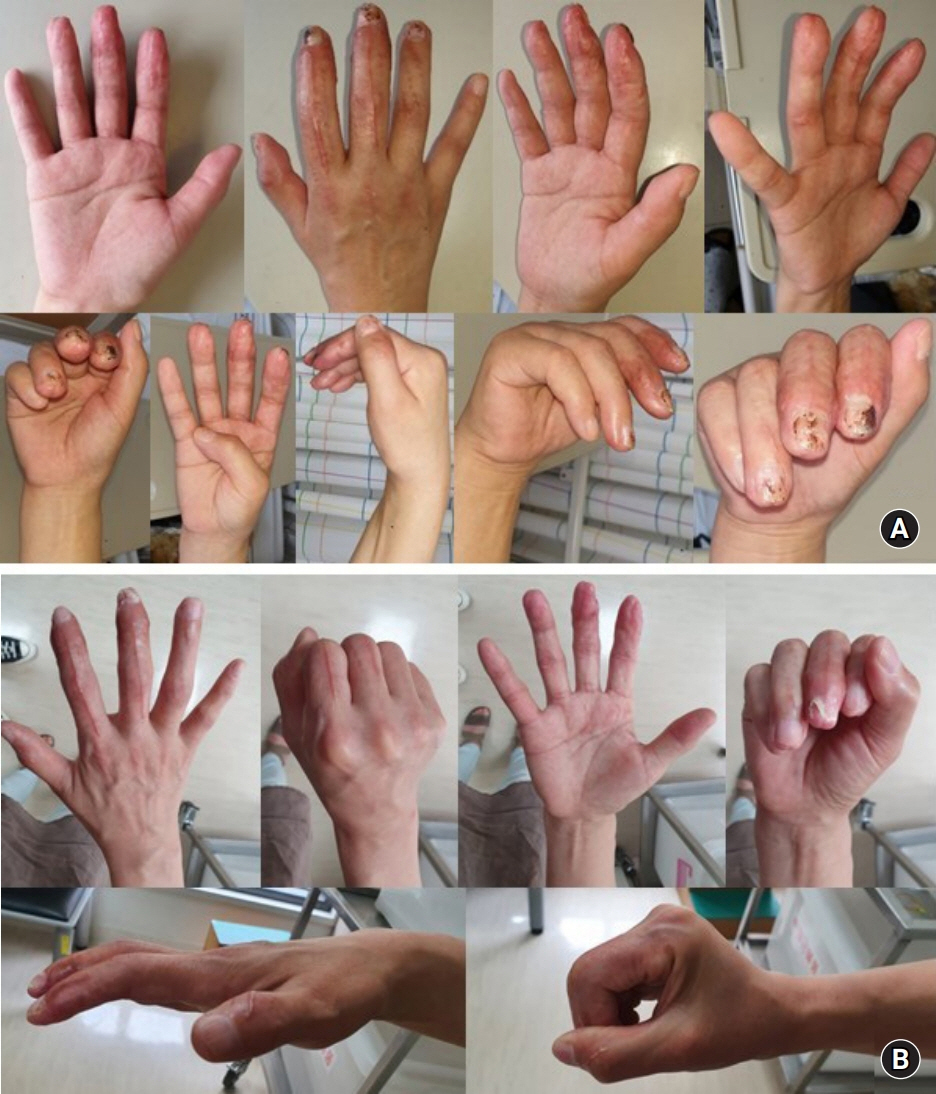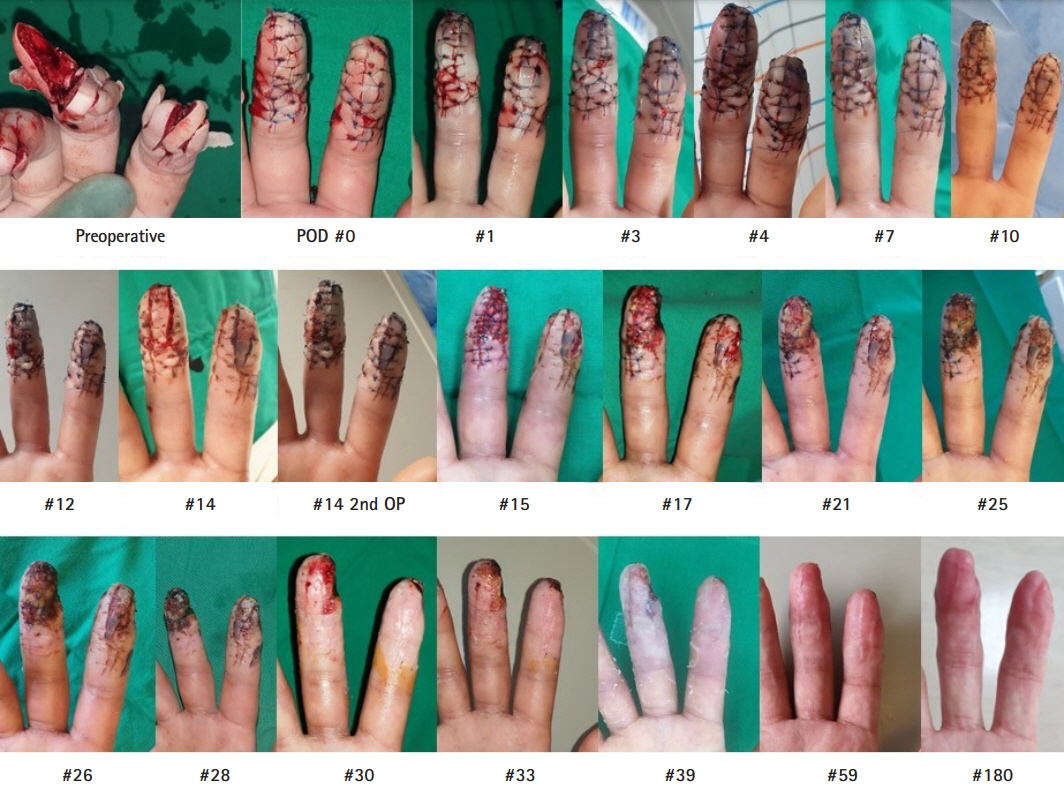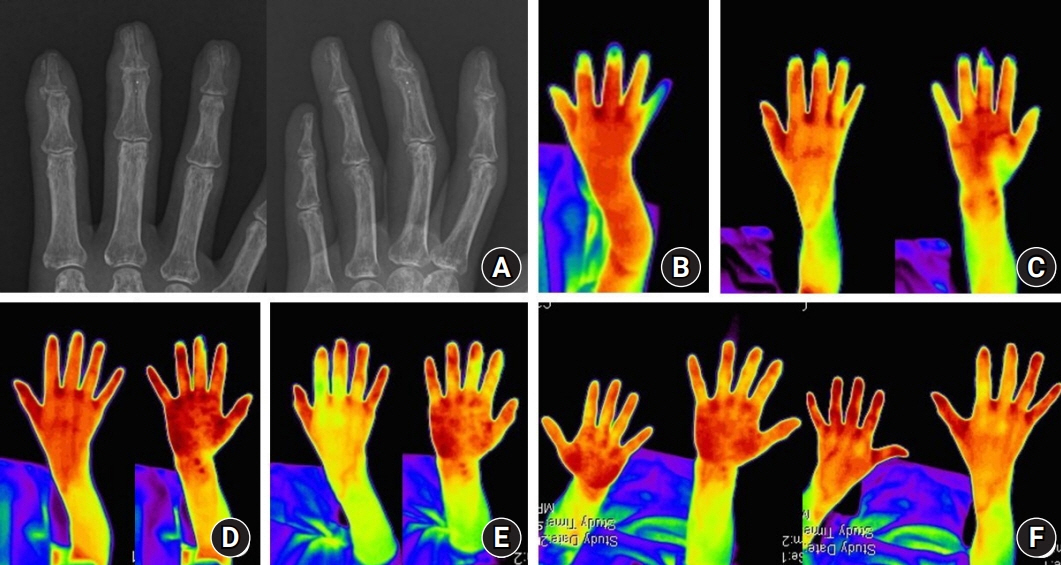Arch Hand Microsurg.
2022 Mar;27(1):54-61. 10.12790/ahm.21.0132.
Hyperbaric oxygen therapy and prostaglandin usage for shred injury of the fingers: a case report
- Affiliations
-
- 1Department of Orthopedic Surgery, Yonsei University Wonju College of Medicine, Wonju, Korea
- KMID: 2526649
- DOI: http://doi.org/10.12790/ahm.21.0132
Abstract
- A 53-year-old woman came to the emergency department because her right hand had been stuck in a potato-shredding machine for 30 minutes. The 2nd, 3rd, and 4th fingers were shredded into multiple slices deep into the phalangeal bone, which showed good circulation, and the wounds were cleaned with massive saline irrigation. The slices of each finger were put together to re-form the finger, which was sutured with nylon, and the circulation of the fingers remained good. Three weeks of gentamicin, cefazolin, and hyperbaric oxygen therapy were used for acute traumatic ischemia since color change of the fingers was observed. Six weeks of prostaglandin was used to promote recovery of circulation. The patient was able to grasp with minimal pain and to perform flexion and extension, and the wound completely healed. Radiography showed the bone union process, and digital infrared thermal imaging showed relatively good circulation.
Figure
Reference
-
References
1. Dellinger EP, Miller SD, Wertz MJ, Grypma M, Droppert B, Anderson PA. Risk of infection after open fracture of the arm or leg. Arch Surg. 1988; 123:1320–7.
Article2. Boerama I, Meyne NG, Brummelkamp WH, Bouma S, Mensch MH, Kamermans F, Stern Hanf M, Van Aalderen. [Life without blood]. Ned Tijdschr Geneeskd. 1960; 104:949–54. In Dutch.3. Levy JM, Joseph RB, Bodell LS, Nykamp PW, Hessel SJ. Prostaglandin E1 in hand angiography. AJR Am J Roentgenol. 1983; 141:1043–6.
Article4. Aburakawa Y, Kawabe J, Okada M, et al. Prostacyclin stimulated integrin-dependent angiogenic effects of endothelial progenitor cells and mediated potent circulation recovery in ischemic hind limb model. Circ J. 2013; 77:1053–62.
Article5. Cross WW 3rd, Swiontkowski MF. Treatment principles in the management of open fractures. Indian J Orthop. 2008; 42:377–86.
Article6. Kline DG, Hackett ER, Davis GD, Myers MB. Effect of mobilization on the blood supply and regeneration of injured nerves. J Surg Res. 1972; 12:254–66.
Article7. Ulubayram K, Nur Cakar A, Korkusuz P, Ertan C, Hasirci N. EGF containing gelatin-based wound dressings. Biomaterials. 2001; 22:1345–56.
Article8. Kota S, Jahangir MA, Ahmed M, et al. Development and evaluation of ofloxacin topical gel containing wound healing modifiers from natural sources. Der Pharm Lett. 2015; 7:226–33.9. Igarashi R, Takenaga M, Matsuda T. Distribution of lipid microsphere preparations. Adv Drug Deliv Rev. 1996; 20:147–54.
Article10. Behnke AR, Forbes HS, Motley EP. Circulatory and visual effects of oxygen at 3 atmospheres pressure. Am J Physiol. 1936; 114:436–42.
Article
- Full Text Links
- Actions
-
Cited
- CITED
-
- Close
- Share
- Similar articles
-
- Treatment of radiation-induced cystitis with hyperbaric oxygen
- A Basic Survey for Regional Capability of Hyperbaric Oxygen Therapy to Multiple Fire Victims
- Early experience of hyperbaric oxygen therapy in radiation-induced cystitis
- Hyperbaric Oxygen Therapy on Pyoderma Gangrenosum - A case report
- Hyperbaric Oxygen Therapy in Pyoderma Gangrenosum







